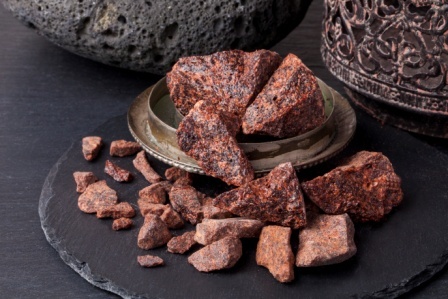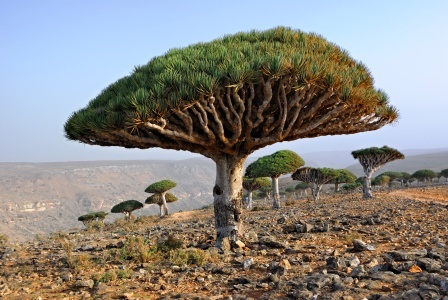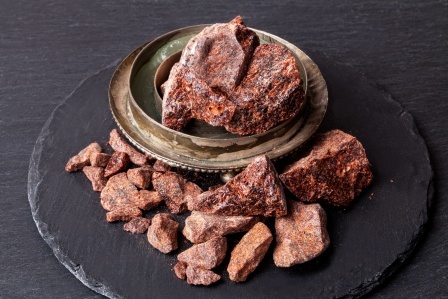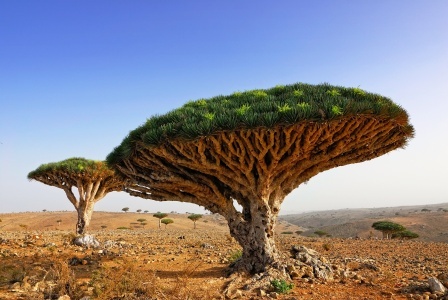Dragon’s Blood Daemonorops draco Uses, Research, Medicines, Side Effects

Raktaniryasa – Daemonorops draco is a plant mentioned for the treatment of wounds, bleeding piles, menorrhagia and diarrhea mixed with blood. Dragon’s Blood used to give classical red colour to herbal oils.
Latin name – Daemonorops draco Blume.
Family – Palmae/ Arecaceae ( Nalikera kula)

Table of Contents
Vernacular names
Names in different languages of Dragon’s Blood:
Hindi name – Khoon kharaba, Hiradhoki. It is called Khoon karaba because, when mixed with liquids, it turns the liquids into blood red colour.
English name – Dragon’s blood
Arabic name – Dammul akwain
Gujarati name – Hiradakhan
Marathi name – Hiradakhan
Morphology
Morphology of Daemenorops draco:
Raktaniryasa is a bi – annual thick climber having spikes, characterized by a single or multiple trunk growing up to 12m tall. It has a slow growth, requiring about 10 years to reach 1m height. The leaves are green, tinged with red at the base, arranged in dense rosettes at the ends of the branches. The flowers are very fragrant, forming large clusters of greenish – white petals. The fruits are orange – red berries, with a single seed, 3 – 4 cm in diameter and has a thick red colored resin collected over it. The resin collected from the wounded trunk, branch or fruit is dark red colored and is called Dragon’s blood. The plant is found in Andaman and Nicobar islands and is a native of Myanmar, Malaysia and Indonesia.

Properties, part used, dosage
Medicinal Properties of Rakt Niryas:
Rasa (Taste) – Kashaya (Astringent)
Guna (Qualities) – Laghu (Light for digestion), Ruksha (Dry in nature)
Vipaka – Katu (Undergoes pungent taste after digestion)
Veerya (Potency) – Sheeta (Cold)
Karma (Actions) – Kaphapitta shamaka (reduces vitiated kapha and pitta dosha)
Part used – Dried resin
Dosage –
Dried resin – 1 to 3 g
Decoction – 20 to 25 ml
Chemical composition
Chemical composition of Daemenorops draco:
The resin contains red tannin derivatives—droco resino tannols, dracoresen and flavone quinones. The other contents present in the plant are – Pterocarpol, Oleanonic aldehyde, Ursonic aldehyde, Dipterocarol, Oleanonic acid, Dammarenolic acid, Dracooxepine, Seco – triflavonoid – Dracofavan –A.

yastu raktaniryAsaH kaShAyaH rukShashItalaH |
kaphapittaharo raktastambhano vraNaropaNaH | (dra.gu.vi)
Collection of the resin: Cut is made into the plant and the thick red colored resin coming out is collected in a cup and dried under sunlight to obtain hardened pieces of resin.
Uses, adverse effects
Uses of Raktaniryasa:
- The dried powder of the resin is sprinkled over the fresh wounds to control bleeding and heal the wound quickly.
- The resin of Daemenorops draco is made into paste by adding water and the paste is applied over external pile mass for quicker healing.
- Raktaniryasa is made into cold infusion and consumed in a dose of 25 – 30 ml to treat cases of menorrhagia and diarrhea mixed with blood.
- In conditions of vomiting mixed with blood and intestinal bleeding, the decoction of the resin of Daemenorops draco is given in a dose of 20 – 25 ml mixed with honey or ghee.
- The resin of Dragon’s blood is also used for coloring purposes in the field of art and art craft.

Adverse effect: No adverse effect is reported.
Interaction with medicines, supplements
Can this be used while taking Homeopathic medicine?
Yes. This product does not react with homeopathic medicine.
Can this medicine be continued while taking supplements like multivitamin tablets, Omega 3 fatty acids etc?
Yes. Generally, this product goes well with most dietary supplements. However, if you are taking more than one product per day, please consult your doctor for an opinion.
With western medicines
Seek your doctor’s advice if you are taking this product along with other western (allopathic / modern) medicines. Some Ayurvedic herbs can interact with modern medicine.
If both Ayurvedic and allopathic medicines are advised together, then it is best to take Allopathic medicine first, wait for 30 minutes and then take the Ayurvedic medicine.
Research
Research article related to Daemenorops draco:
Anti – cancer activity: D. draco morphological parts are considered as rich sources of cytostatic and cytotoxic steroidal saponins. Several studies have proved intense cytostatic activity against human acute myeloid leukemia cells (HL – 60) of the two steroidal saponins extracted from the aerial parts of D. draco. In addition, Gonzαlez et al., reported the strong cytotoxic effect on the same cell line of the two new steroidal saponins draconians A and B isolated from D. draco bark; the mechanism of these cytotoxic compounds was established to be via activation of apoptotic process.
Scientific classification
Kingdom: Plantae
Order: Asparagales
Family: Asparagaceae
Subfamily: Nolinoideae
Genus: Dracaena
Species: D. draco
Author: Dr.B.K.Prashanth M.D (Ayu), Ph.D
E mail: [email protected]
Click to consult Dr Prashanth BK
Sthanika karma (Action on different system)
External application – It has styptic and wound healing action. Its powder is indicated externally in bruises, non healing wounds etc.
Digestive system – Absorbent, Indicated in Diarrhea, Dysentery etc.
Circulatory System – Helps to arrest bleeding, indicated in Hemorrhoids, Chest injury, Menorrhagia etc.











2 comments
parth raval
Namashkar sir!!
Thanks for sharing actual details about ayurveda through this website.
I have one question for this plant – Khoonkharaba.
Is there any reference of this herb in bruhatrayi or laghutrayi ?
If not, then how did you derived this rasa-panchaka of this plant?
Thanks
Dr J V Hebbar MD(Ayu)Author
We used Dravya Guna Vijnana reference Shloka.